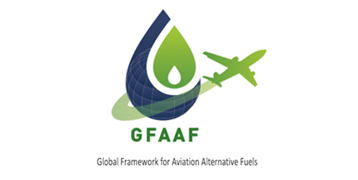Catalytic pyrolysis of vegetable oils over NbOPO4 for SAF and green diesel production
Journal of Analytical and Applied Pyrolysis
• Volume 177
(2024)
FEATURED BOOK
Drop-in biofuels for aviation have been pointed out as a sustainable alternative for reducing the emission of greenhouse gases. These fuels are hydrocarbons and have a performance and composition similar to fossil fuels. Developing conversion routes for their production has stimulated different research projects and is considered one of the most challenging areas in biofuels research. In the present study, the liquid phase was analyzed and the biohydrocarbons were obtained from vegetable oils in the distillation range of gasoline, diesel, and aviation kerosene using NbOPO4 as a catalyst in the pyrolysis process. This catalyst was characterized by XRD and gas adsorption/desorption methods (BET, BJH, and TPD). The fatty materials' simultaneous deoxygenation, cracking, and partial isomerization reactions were performed at 350 °C under N2 atmosphere (10 bar), with up to 95% conversions. Considering the overlap of carbon chains in the fuel ranges, this study demonstrates that it is possible to obtain up to 21%, 83%, and 80% of biogasoline, Sustainable Aviation Fuel (SAF), and green diesel, respectively. The products were characterized by infrared spectroscopy and gas chromatography coupled with mass spectrometry. The freezing temperatures of the products without any purification treatment and their mixtures with fossil kerosene were measured by DSC. The SAF obtained after the distillation step, presented a freezing point of − 47 °C, in agreement with the standard ASTM 7566. This innovative, sustainable, and low-cost process is promising for industrial use, mainly because hydrogen was not used, and reactions were performed in a one-pot procedure.
Pyrolysis; SAF; Biogasoline; Green diesel; NbOPO4 catalyst; Deoxygenation; Hydrogen-free process



 Back
Back



